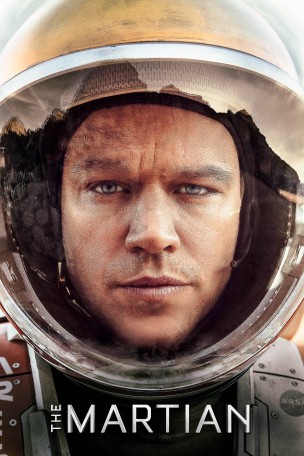Think you know Ridley Scott? Think again. Going against everything you may know about Scott’s dystopian science fiction films (“Blade Runner,” “Alien,” “Prometheus”), Scott’s adaptation of Andy Weir’s 2011 best-selling novel, the film “The Martian,” is not only a fundamentally enthusiastic, but also worth the price of admission.
In most movies nowadays, you see the film open on a shot of the protagonist’s face. However, Scott chooses to open on a shot of the vastness of space, showing what’s really important for the audience to realize about the film – a desire for space exploration.
The Ares III crew is comprised of a star-studded ensemble including Jessica Chastain, Michael Peña, and Kate Mara. No sooner have they begun their experiments on Mars than a windstorm hits. A radio antenna strikes Mark Watney (Matt Damon) tossing him across the desert plane and despite the crew’s fleeting attempt to rescue him, his biometric suit reading indicates no signs of life. Thus, the crew is forced to abort the mission and launch off the Red Planet without him.
After an overlong scene depicting stomach stapling in graphic detail (Scott has some weird stomach-stapling fetish, i.e. see “Prometheus”) this indefatigable botanist-astronaut stops at nothing, to “science the shit” out of each problem, step-by-step to get back home. Intertwined with Watney’s narrative, back on Earth, NASA’s director of Mars Operations, Vincent Kapoor (Chiwetel Ejiofor) tries to come up with a rescue mission while dealing with his bureaucratic boss (Jeff Daniels) and a NASA spokesperson (Kristen Wiig).
Drew Goddard’s loose adaption of Weir’s novel hastens the pace by not bombarding its audience with jargon, using time-lapsed shots used to represent weeks at a time, and cutting some key scenes out of the 142-minute film. Weir is not a thinker capable of the deep-thought, existential level of writing on “Interstellar;” he’s just a space-nerd with a cheeky sense of humor. At times, Goddard’s script is lacking in scientific explanation (a crucial element of Weir’s novel) and relies too heavily on profanity-laden one-liners. Scott and Goddard are interested in using just enough geeky jargon to reel in wide-eyed viewers, and get them excited about the possibilities of space exploration and life on Mars. (A great marketing tie-in for NASA; the first feature film with their heavy involvement in a while.
Goddard manages to maintain the blithe banter between crew mates in the first scene, but little is done later to further develop the ensemble except for a flippantly touching exchange via email between Martinez and Watney. Notwithstanding this, Goddard is able to make the climax more cinematic and cater to those who choose to watch the film in 3D.
Instead of using green screens, Scott chose to shoot the Mars scenes on Earth, in Jordan, which creates a more grounded and naturalistic texture. Cinematographer Dairusz Wolski (who previously worked with Scott on Prometheus and shot the upcoming film “The Walk,” which already has articles written on it for its ability to make audience members vomit due to nausea) did create some picturesque, ochreish landscape shots for exposition. This is due in part to the fact that Goddard failed to include most of the scenes involving Watney driving in the rover across the vast, crater-filled Mars’ landscape. Furthermore, the monotony of waiting hours needed to replenish power to Watney’s solar panel cells and of being cramped in a rover for weeks on end could have allowed the audience more to work with in connecting with Mark’s struggle than simply showing that he gave up on hygiene and decided to grow out a beard. Whereas in the novel, we were constantly reminded, for example, of how much time Watney had left before his oxygen ran out after the Hab blows, here a measure of suspense is lost when we can only follow along and experience the action as Watney does, (although voice over could have worked well here too), and hope he doesn’t die halfway through the film.
Yet Damon’s performance truly drives the film, along with Harry Gregson-Williams’ intimate ambiance setting score. Unlike similar protagonist-stranded films that scale the story down to a more intimate level, this is instead a dual-narrative film (NASA’s PR struggles and problem-solving, and Mark Watney’s struggle to survive on Mars) often cross-cutting 140 million miles away. The film also utilizes fast-paced editing and ’70s disco music to keep the audience thoroughly engaged for a fun, scientifically poignant, and heart-wrenching ride.

2 Comments
Bryan Stascavage
Hi Max,
Excellent article! I was really interested in what NASA had to say about this movie, and they actually did a IAMA on reddit, which can be found here: https://www.reddit.com/r/IAmA/comments/3nljsy/were_nasas_real_martians_working_to_send_humans/
Very interesting information not only about the movie, but also the real effort to get to Mars.
v/r – Bryan